MoNuMent
A-Z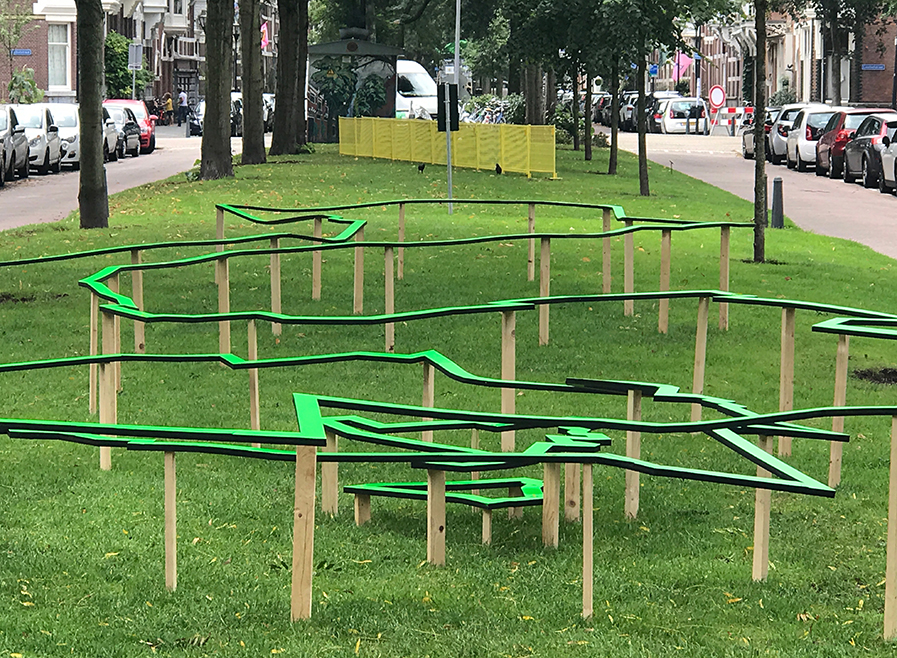
view of the outside exhibition ‘Een moment, nu: mo(nu)ment’ 2017
curated by me for Arte Concordia Rotterdam 2017, on request of Olphaert den Otter and Cora Moret
with here an overview, with the work by Willem Besselink (front) and the work by Albert Kliest in the back
exhibiting artists: Juan Beladrich, Willem Besselink, Ellen Boersma, Anna Bondt, Iris Bouwmeester, Paul Cox, Jessica van Deursen, Rolf Engelen, Albert Kliest, Robin Kolleman, Tanja Smeets, Josua Wechsler, Maurice Meewisse, and artist flags by more than 30 artists
all works were made (or adapted) specifically for this exhibition, relating in different ways to the title
centering on the relation between moment and monument
this led to a series of works that worked into or on this context
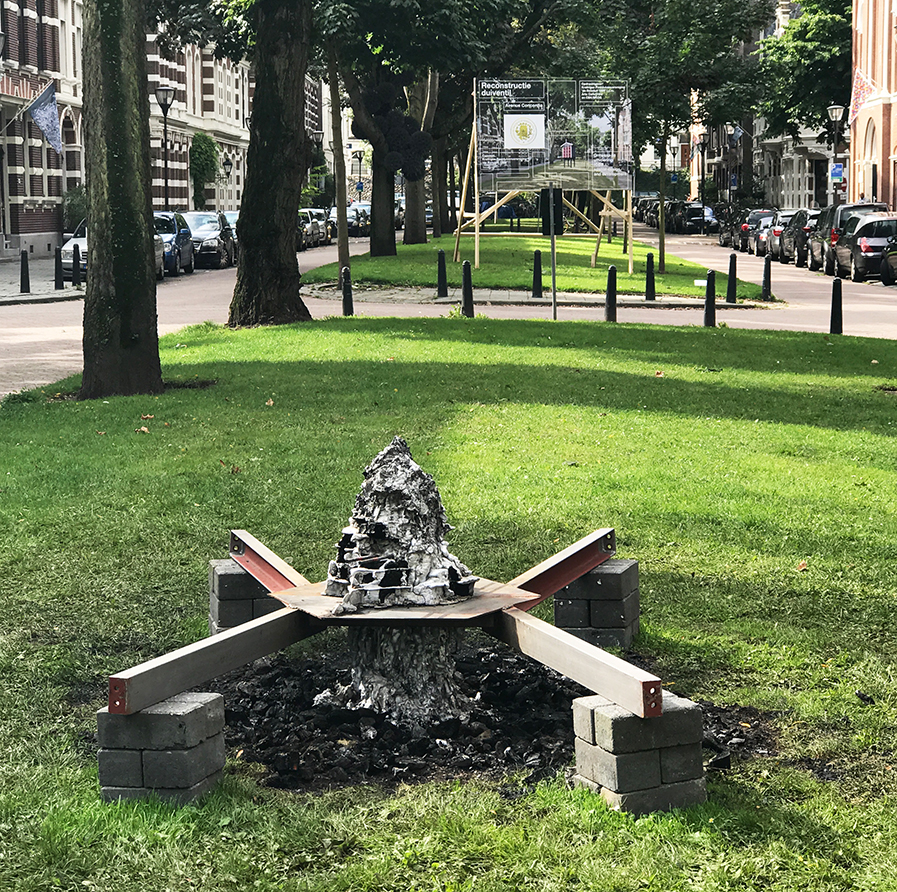
in the foreground the aluminium work that was the result of the opening performance by Maurice Meewisse, with in the tree on the left the work by Tanja Smeets (see below) and in the middle the work by Paul Cox
This exhibition was the 3rd Arte Concordia held in the Rotterdam street Avenue Concordia. This street is a protected cityscape, a monument. The word “monument” evokes stately sculptures in public space and beautifully decorated buildings: memorial signs that refer to a venerated (but often now problematic) past. At the same time, in the Dutch word, the concepts “nu” (now) and “moment” hide: monuments refer to specific moments, to (political) events in time.
The artists make sculptures especially for Arte Concordia as monuments that mark the temporary or temporary acts that become a mo(nu)ment.
In this outside exhibition you could therefore encounter work in which the unplanned is leading (‘fietsen met rolf’, a non-spectacular event, rain or shine, by Rolf Engelen). Works between history, politics and fiction (Paul Cox, Jessica van Deursen). Works about the way in which a figure can also be a place (Robin Kolleman). Josua Wechsler’s work asks questions about how to make the environment more humane; Anna Bondt explores the boundaries between public and public through contact with residents. Juan Beladrich leaves mysterious texts behind in the public space. There is work that is created on the spot (Maurice Meewisse) and work that adds new temporary ornaments (Tanja Smeets). Iris Bouwmeester looks for beauty in shape, light and space on location. Ellen Boersma’s work marks the space by means of a line. Willem Besselink makes the historical boundaries of Rotterdam visible, while Albert Kliest divides public space through his strategically placed work.
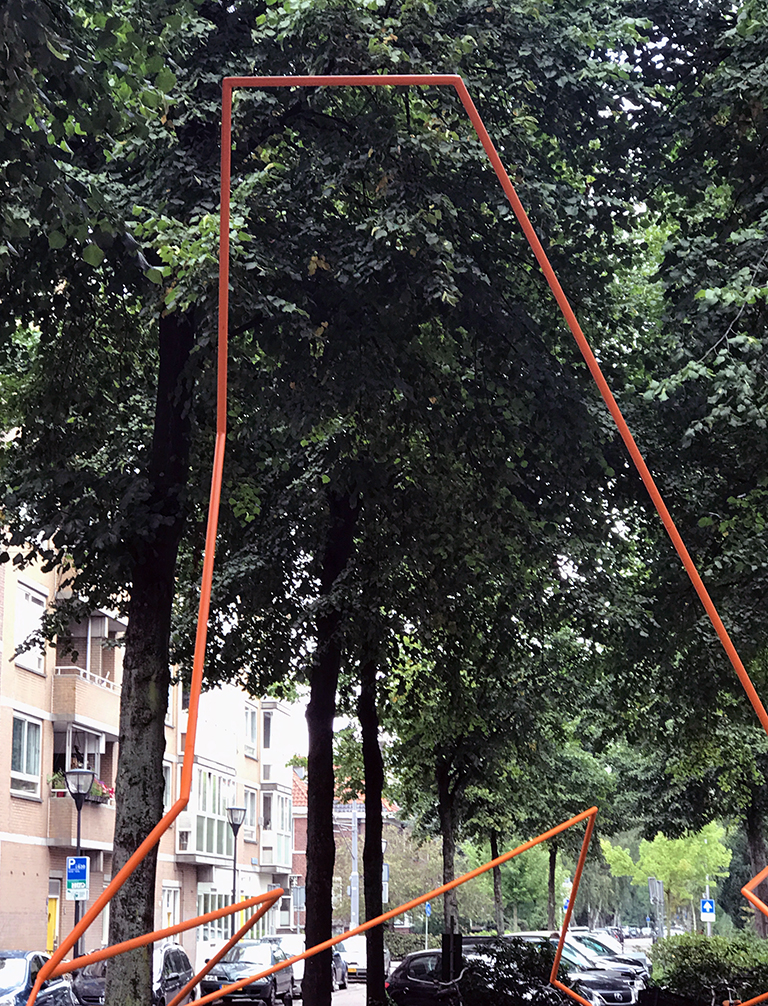
starting from the Oudedijk, walking along the Avenue Concordia towards the Oostzeedijk (beneden):
you woukld first encounter this huge large scale spatial ‘drawing’ by Ellen Boersma
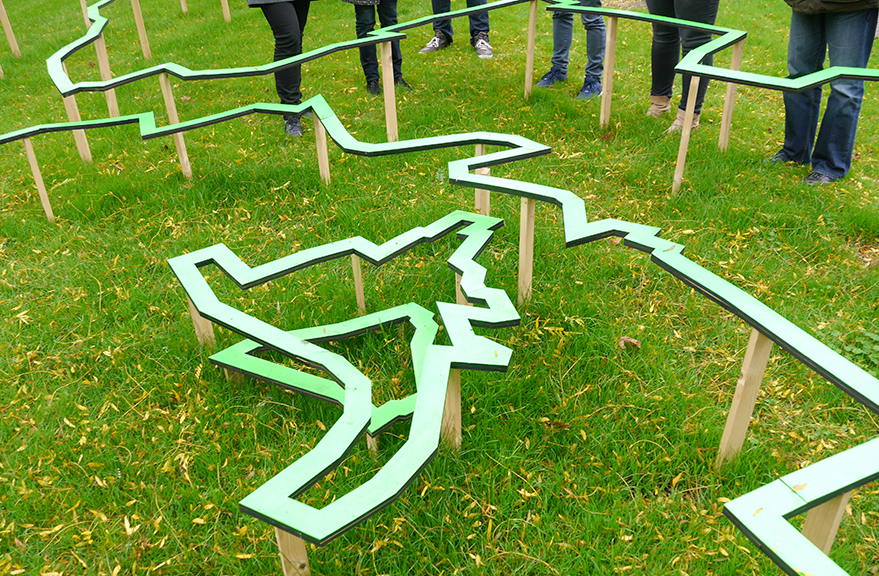
then this installation by Willem Besselink, Rotterdams Ontwikkeling (Rotterdam Development), showing the growth of Rotterdam to a city. Four green lines were placed at different heights. Showing the city’s boundaries of 1690, 1850, 1905 and 2017. > link to website Willem Besselink
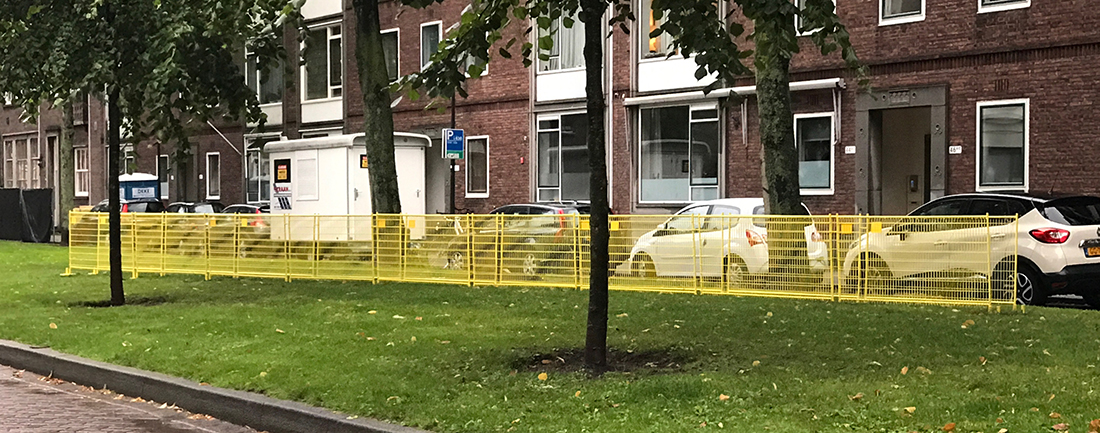
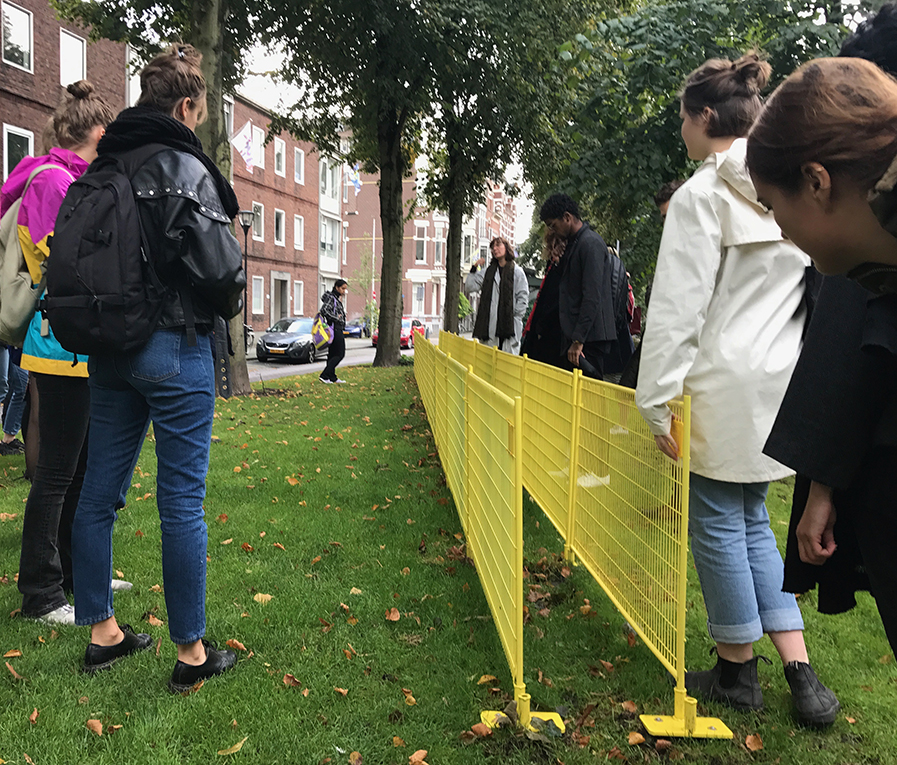
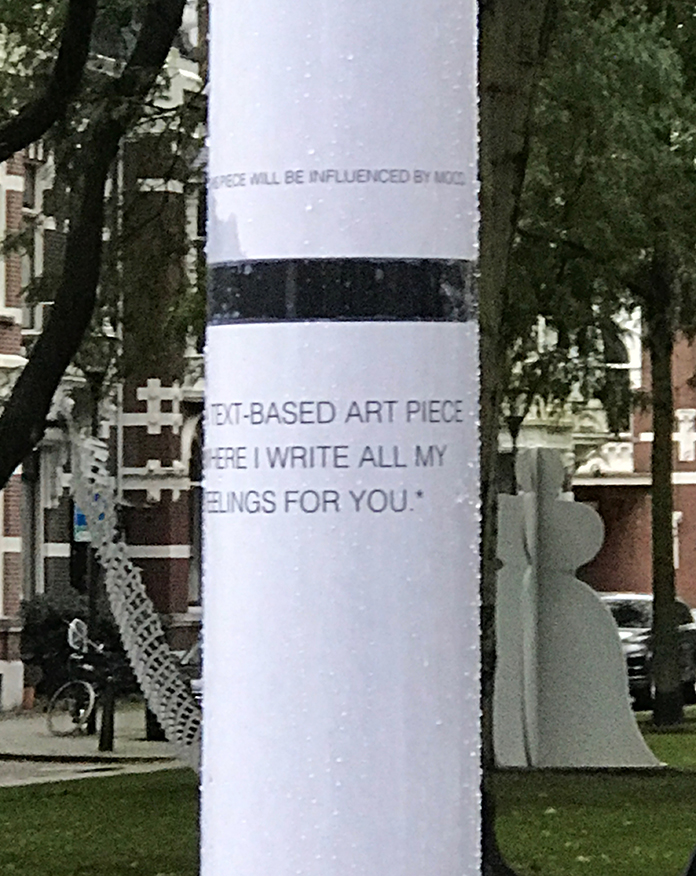
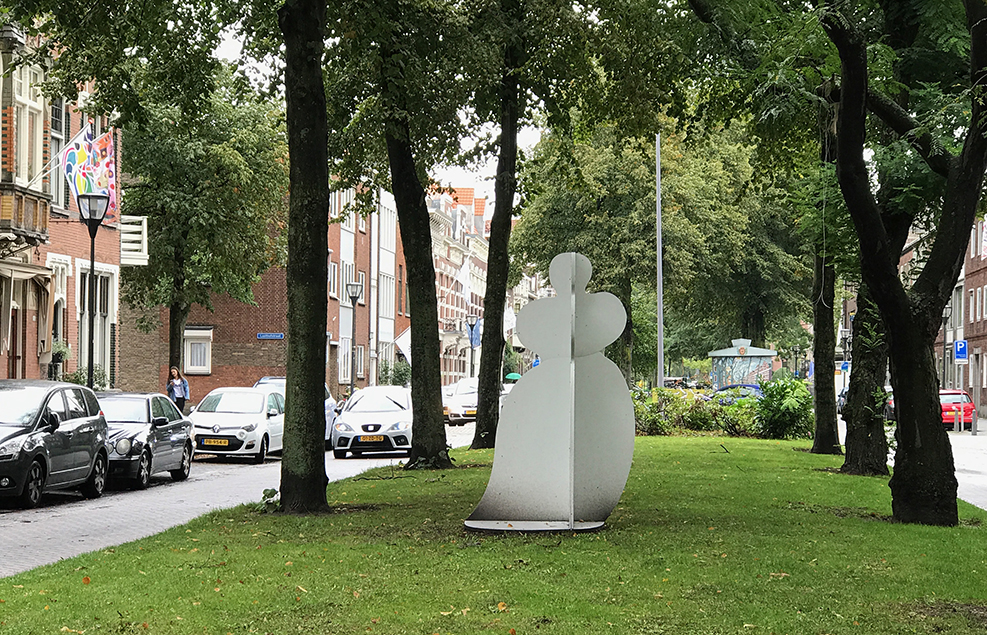
near where the Avenue crosses the Lusthofstraat, there was this beautiful monumental figure by Robin Kolleman, which could be ‘aangetast’ (affected and touched) by both the weather and visitors:
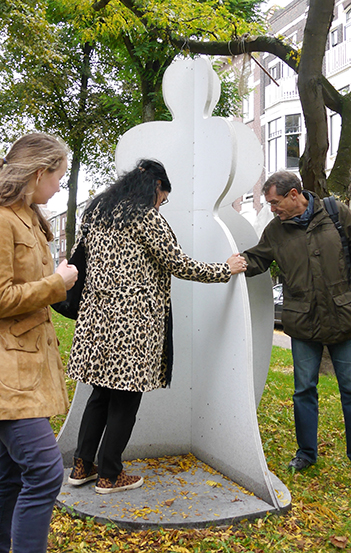
next, there was a place which could be either empty:
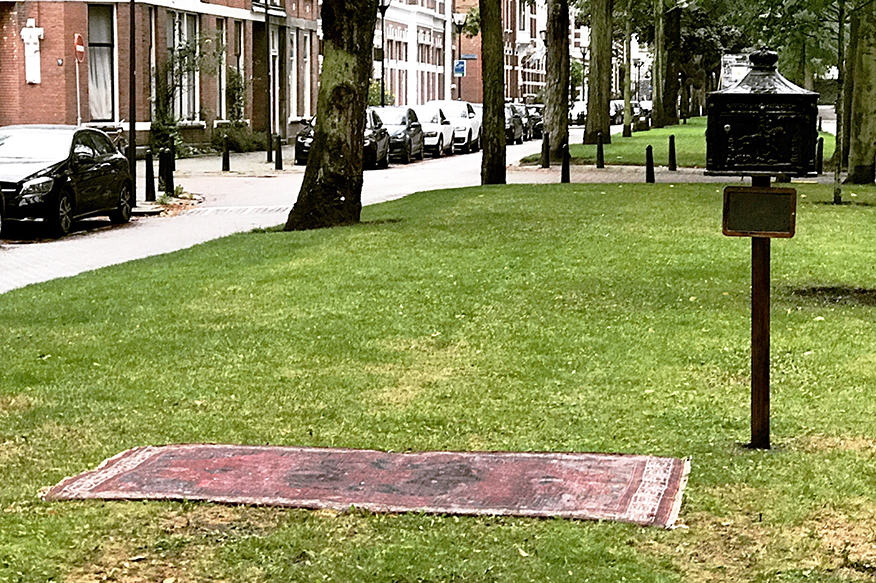
or occupied:
Anna Bondt did a project where she first collected stories from Avenue Concordia residents,
which she collected in a beautiful book. On specific moments, Anna would perform as ‘Lady Concordia’, sitting ‘blind’ alongside a table with the book,

while visitors could read glimpses of the secret stories collected
high up, in a tree, the work ‘inhale exhale’ by Josua Wechsler, here a photo made by him from above:
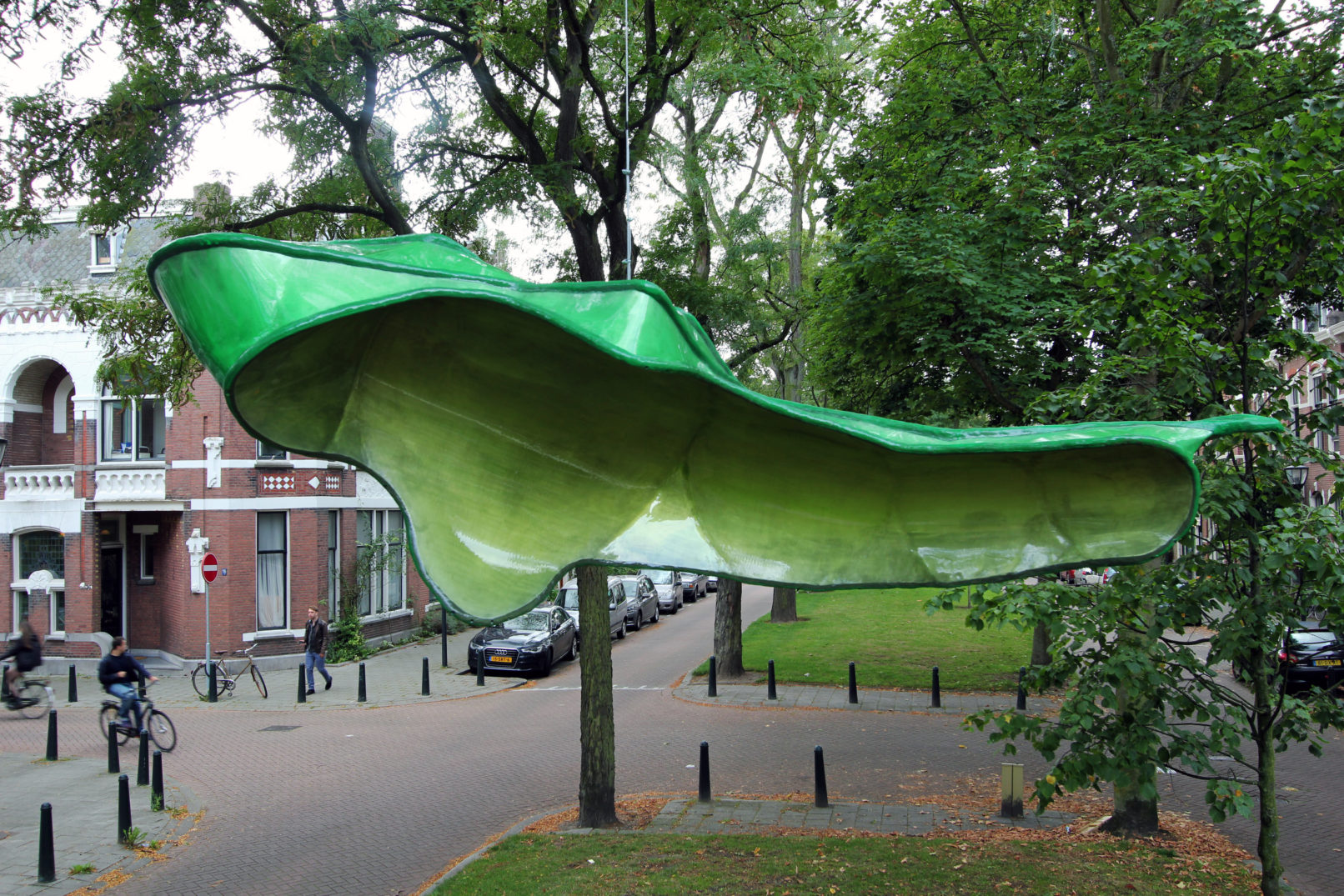 and from the ground:
and from the ground:
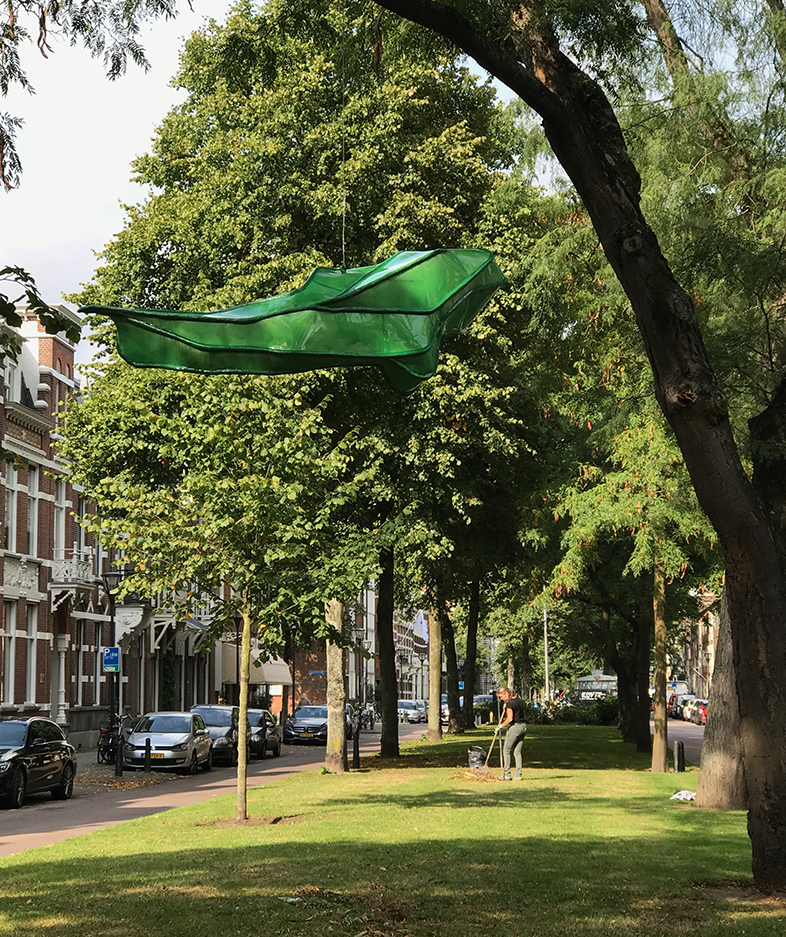 > [link to Josua Wechsler's website](http://www.josuawechsler.com/portfolio/inhale-exhale/)
> [link to Josua Wechsler's website](http://www.josuawechsler.com/portfolio/inhale-exhale/)Iris Bouwmeester created this enigmatic object:
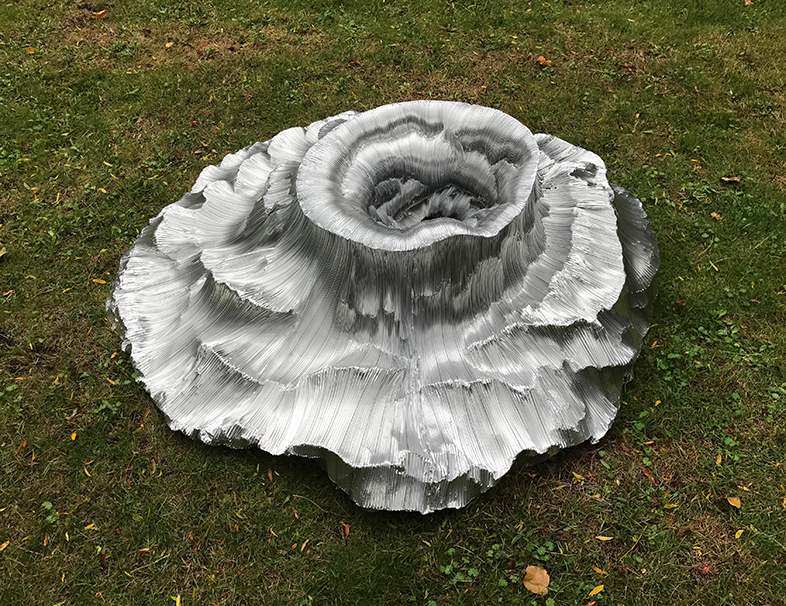
with here a participant of one of the guided tours explaining how she experiences the work:
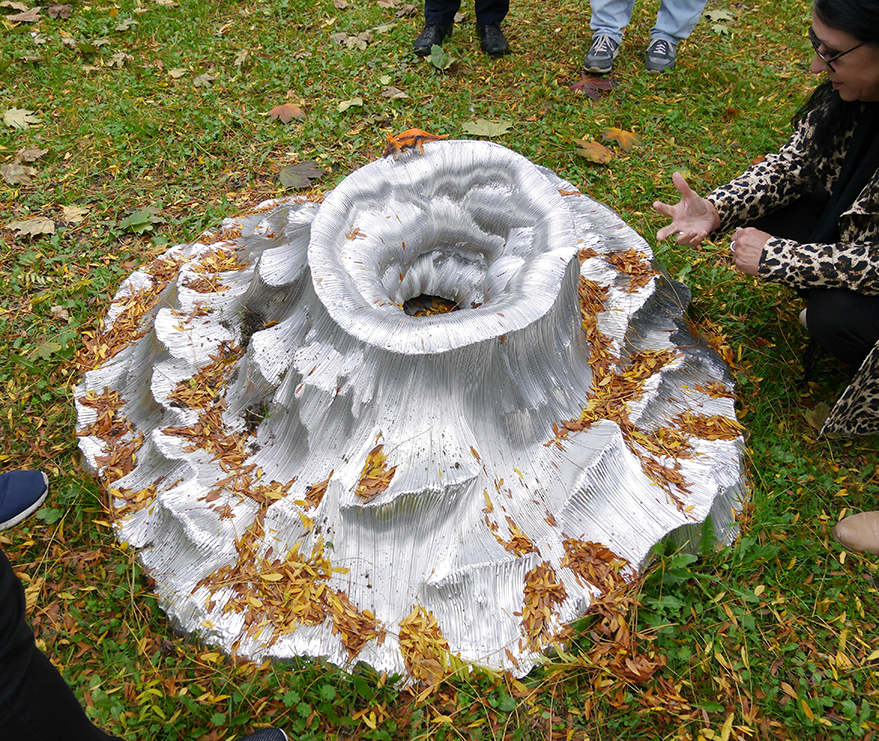
Maurice Meewisse often works performatively, where both the act and craft of making, e.g. metal-melting, are both performance and process. For the opening he created a beautiful wooden pyre, set aflame and burning into the night:

when all alumninium scrap metal encased within had melted, the fire was stopped:
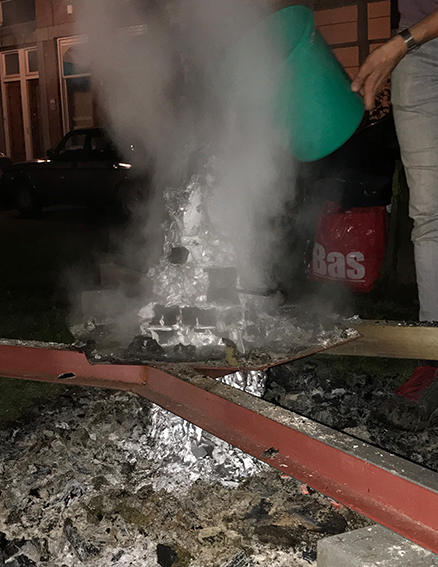
leaving the enigmatic aluminium remains you could see on the first photo
nearby, Juan Beladrich has left one other of hios text works (more could be found), this one elegantly addressed to “jij” (you):
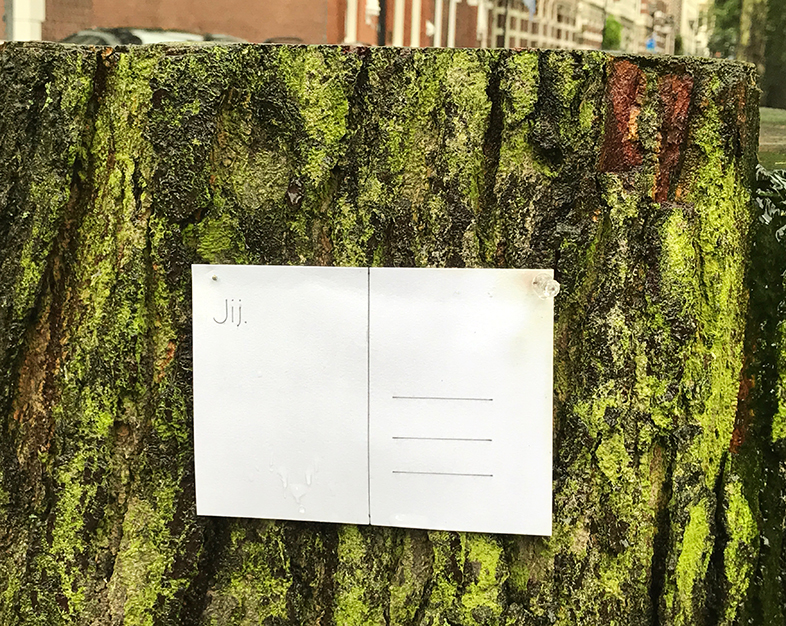
many residents wanted this beautiful work by Tanja Smeets to stay forever:
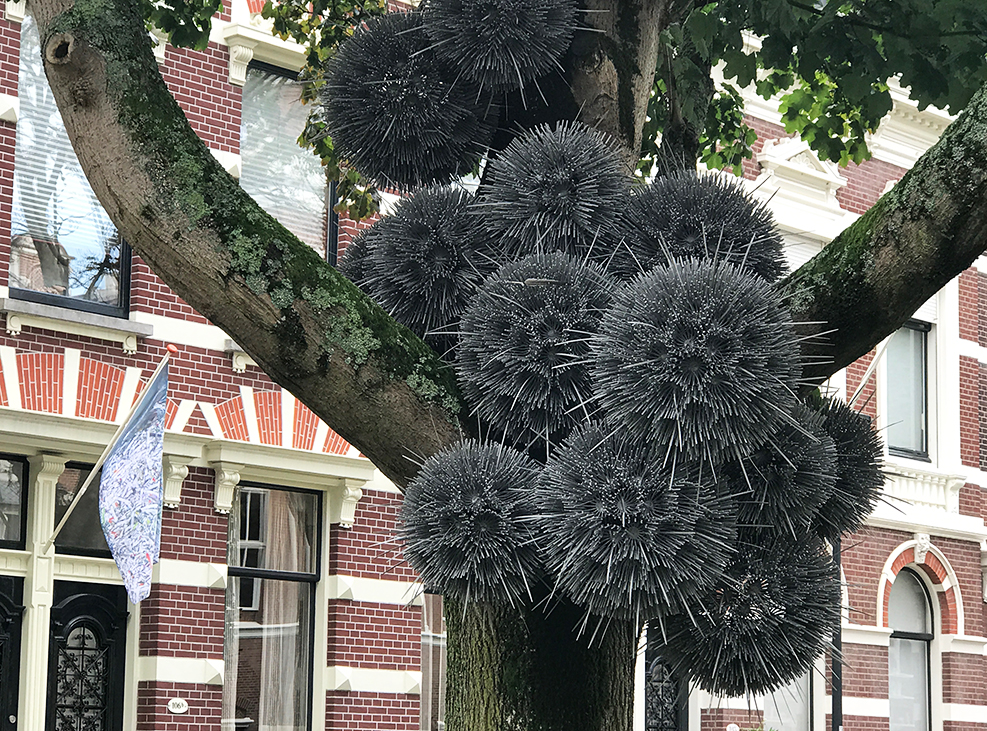
the adjacent billboard work by Paul Cox - evoking a fictive historical pigeon association - was not seen as art by some, while raising very interesting questions about who creates what past:

next, the observant passer-by could encounter the ephemeral work by Rolf Engelen: consisting of a stainless steel tile in the sidewalk: fietsen met rolf’. All over Rotterdam, similar steel tiles are used as title boards for art in public spaces, owned by BKOR/SiR/CBK Rotterdam.
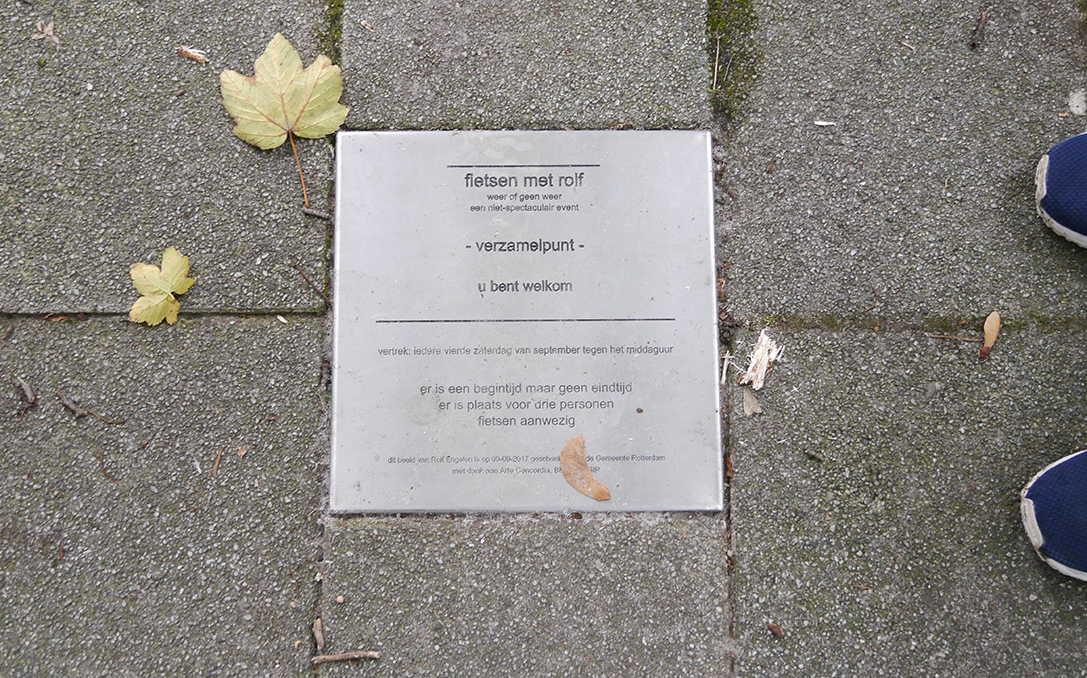
This work is both the most visually subtle and most ambitious work in time-frame. For the next 10 years, a bike tour will depart on the fourth Saturday of September at noon, rain or shine. There is no end time and there is room for three people. Bicycles are available. After 10 years, it is determined in consultation with Rolf whether the period will be extended or whether the tile will be removed.
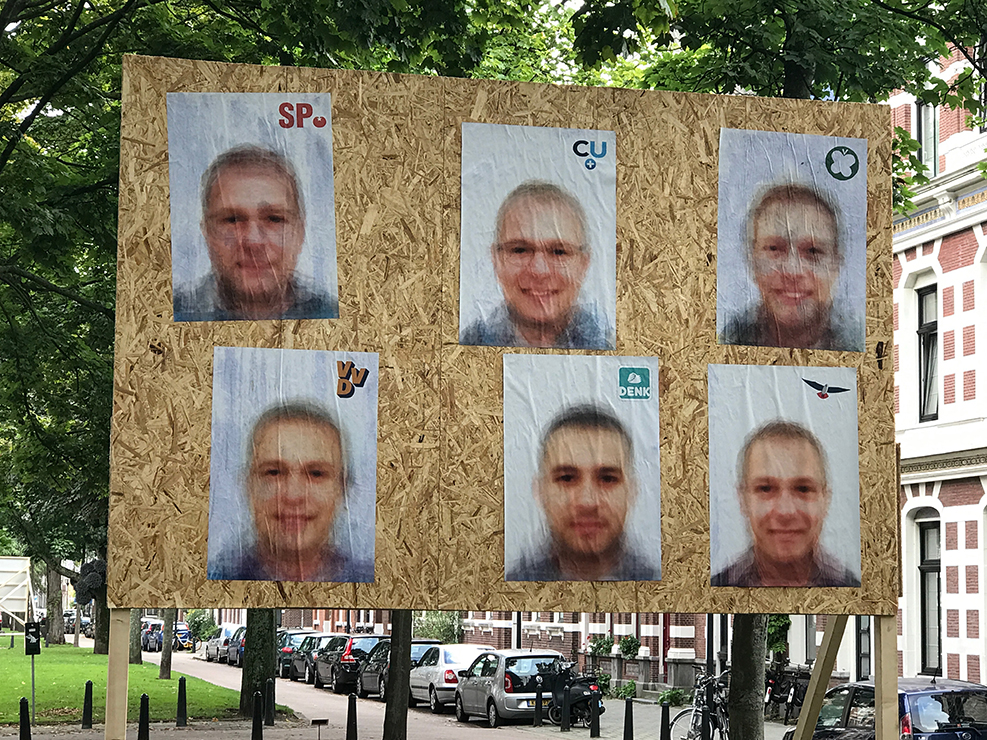
Before and since the Dutch elections of 2017, it has become more and more unclear if political news nowadays is based on truth or fiction. Jessica asked what happens when we humans, social beings and therefore ‘politcal animals’, start to vote based on stereotypes and false conceptions? And who is to blame, since nowadays, the public is no longer only the consumer of the news, but also its producer and broadcaster?
Following the likes on social media of the politicians of the biggest Dutch political parties, she collected a thousand portraits from the voters’ personal social media accounts and stacked them on top of one another as transparant layers with specialised software from Oxford University. This way, she was able to calculate the average face of the voters of each Dutch politcal party.
These were posted like campaigning portraits with the political parties’ logos onto a plywood billboard, such as used in the Netherlands during election times. In the lecture performance (and in her artist book) Jessica explained the backgrounds of her project.
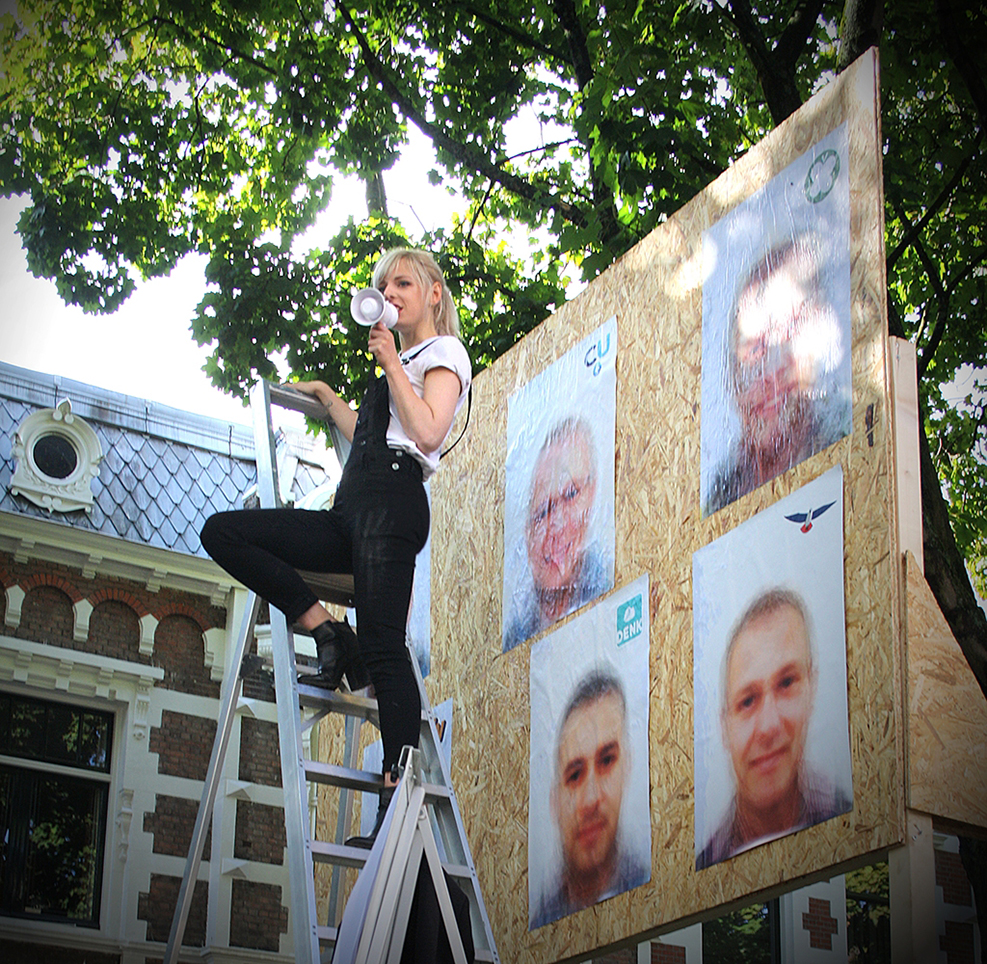
The Arte Concordia open air exhibition took place from 9. September to 8. October 2017.
During the weekends there were artist walk&talks, guided tours and passers-by could unexpectedly experience special performances and other acts. The exhibition was visited by both art professionbals, residents, children from a local first grade school and art school students.
All artists created work in edition especially for Arte Concordia. These works could be seen and purchased at design studio DOEN, Avenue Concordia 30 (in the old post office). Proceeds were going back to the artists and Arte Concordia. This parallel exhibition at DOEN also included other work by participants.
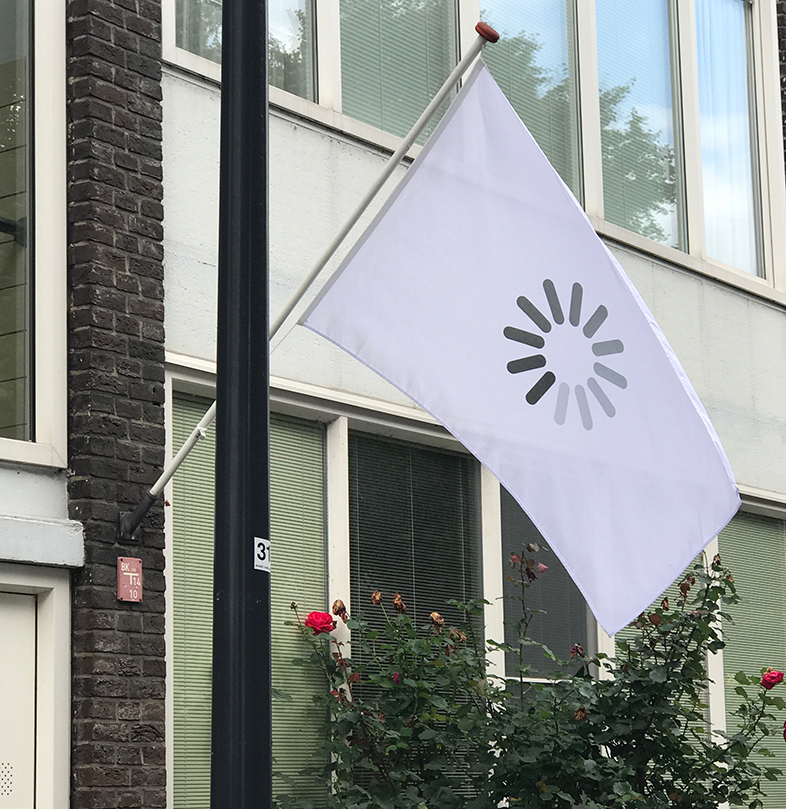
In addition to the 13 site specific art works, some 35 artist flags, specially made for this edition, were flying on the buildings on the Avenue. Among many up-and-coming youn g artists, such as Mette Sterre, Marijke Appelman, Benjamin Li, there were also flags selected from artists from Galerie Herenplaats (Outsider Art). During the exhibition, the flags were also flying in the Flag Parade in the center of the city.
other exhibitions curated by me: ‘WITHINSIGHTS’ 1994 / ‘room 10. in ARS LONGA VITA BREVIS’ 2018 /